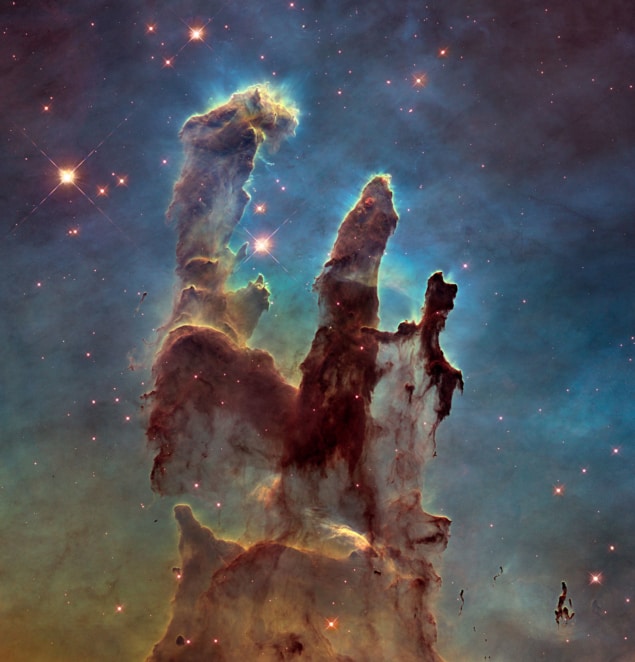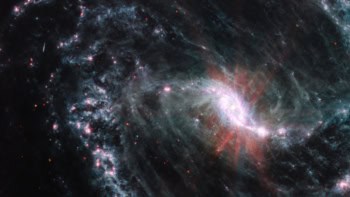The Hubble Space Telescope was launched on 24 April 1990. To celebrate its 30th anniversary in space, Physics World is publishing a series of blog posts exploring Hubble’s 10 best images, as chosen by the science journalist and editor Keith Cooper

The word “iconic” doesn’t do the Pillars of Creation justice. Originally imaged in 1995 by Hubble’s Wide Field and Planetary Camera 2, the colourful Pillars signalled a fundamental shift in the public’s perception of the space telescope’s worth and abilities, which had been tainted by the controversy of its initially blurred vision. This 2014 reshoot, taken using the Wide Field Camera 3, show the Pillars in all their glory: three towering columns of molecular gas, each several light years long and found at the heart of the Eagle Nebula, which is located around 5700 light-years away within the Milky Way.

Hubble’s best shots: Impact of comet Shoemaker–Levy 9
Amazingly, the columns are the result of erosion. Just as wind sculpts rock columns in the desert, the torrents of ultraviolet radiation emitted by hot young stars that have formed within the nebula shape the clouds of gas around it. The Pillars of Creation are a majestic ode to our origins in a similar molecular gas cloud, 4.6 billion years ago.



